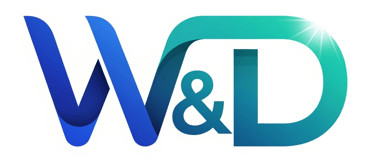Safeguarding Your Digital Assets: A Deep Dive into Data Security
In today's interconnected world, data is the new currency. From personal photos and financial records to business strategies and proprietary information, our lives and livelihoods are increasingly dependent on digital data. But with this convenience comes a critical responsibility: data security. Protecting this invaluable asset isn't just a technical challenge; it's a fundamental necessity for individuals and organizations alike.
7/31/20252 min read


In today's interconnected world, data is the new currency. From personal photos and financial records to business strategies and proprietary information, our lives and livelihoods are increasingly dependent on digital data. But with this convenience comes a critical responsibility: data security. Protecting this invaluable asset isn't just a technical challenge; it's a fundamental necessity for individuals and organizations alike.
The Foundation of Trust
At its core, data security is about ensuring the confidentiality, integrity, and availability of data.
Confidentiality means preventing unauthorized access. Think of it like a locked diary—only the person with the key can read its contents. In the digital realm, this is achieved through measures like encryption and access controls.
Integrity ensures that data remains accurate and unaltered. Imagine a bank transaction where the amount is tampered with. Integrity measures, such as hash functions, act as a digital checksum to detect any unauthorized modifications.
Availability guarantees that data is accessible when needed by authorized users. A website crashing or a server failing can render data useless, even if it's secure. Redundancy and backup systems are key to ensuring availability.
Common Threats to Data Security
Data isn't under threat from just one source. It faces a constant barrage of potential attacks, each with its own methodology.
Malware: This is a broad term for malicious software designed to disrupt computer operations, steal data, or gain unauthorized access. Examples include viruses, ransomware, and spyware.
Phishing: A deceptive tactic where attackers pose as a legitimate entity (like a bank or a social media company) to trick people into revealing sensitive information, such as passwords and credit card numbers.
Insider Threats: Sometimes, the danger comes from within. Disgruntled employees or those who are simply careless can inadvertently or intentionally compromise data.
Denial-of-Service (DoS) Attacks: These attacks overwhelm a system with traffic, making it unavailable to legitimate users. While they don't necessarily steal data, they can cause significant disruption and financial loss.
Essential Strategies for Protection
Protecting data requires a multi-layered approach. No single tool or practice is a silver bullet.
Implement Strong Access Controls: Use strong, unique passwords and multi-factor authentication (MFA). MFA requires users to provide two or more verification factors to gain access, making it significantly harder for attackers to compromise accounts.
Regularly Update and Patch Software: Software vendors frequently release updates to fix security vulnerabilities. Ignoring these patches is like leaving a door unlocked. Always keep your operating systems, applications, and security software up to date.
Encrypt Everything: Encryption scrambles data so that it's unreadable without the correct decryption key. Encrypting data both when it's at rest (stored on a hard drive) and in transit (sent over the internet) is a crucial line of defense.
Educate and Train Users: Human error is a leading cause of security breaches. Regular training on topics like recognizing phishing emails, safe Browse habits, and password hygiene can turn your employees and family members into your first line of defense.
Backup Your Data: In the event of a ransomware attack or hardware failure, a recent backup can be your savior. Follow the 3-2-1 backup rule: keep 3 copies of your data, on 2 different types of media, with 1 copy off-site.
Data security is not a one-time task; it's an ongoing commitment. By understanding the threats and implementing robust security practices, you can protect your digital assets, build trust with your customers, and ensure the resilience of your digital life.
